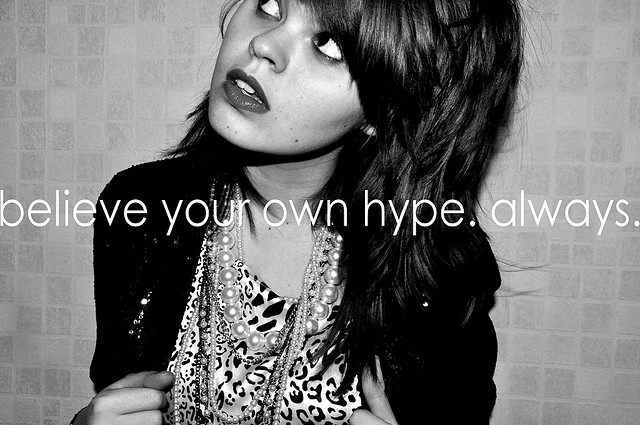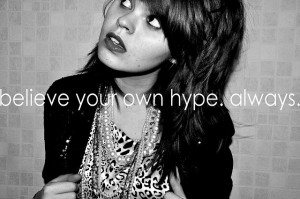To grow a community, you’ve first got to believe that you have a community. Or you’ve got to believe that there is the potential to grow one, and that doing so is a priority for achieving your business goals. It is certainly not the case that every brand must have a community, but, as with everything, belief is half the battle. And in this era of the social consumer, you are limiting your business’ potential by not believing that there is a community of supporters, fans and ambassadors out there who are worth nurturing.
For the sake of this argument, let’s consider community building as a function of marketing and customer relations. First you create a brand story and a promise. Then you fulfill that promise. Then you connect with your customers to see how that promise sits with them, and how you can improve on it.
Let’s take any new consumer-facing tech startup as our user case here, while not limiting the need for community to tech startups alone. There is one school of thought (espoused by the popular VC, Fred Wilson) that if you have a great product, you don’t need marketing. Let’s also take a look at the first two comments in that same blog post. As Seth Godin and Scott Paley point out, essentially all the suggestions Fred Wilson makes for averting marketing efforts are marketing efforts, and many of them are community-building efforts in particular. I personally have been told by leaders of [certain unnamed] startupswho, most likely, consider Mr. Wilson’s advice as gospelthat, “we don’t have a community; we only have a tool that lots of people are using.
Ok, fair enough. In startup reality you have to prioritize engineering the product over marketing the product. But once you develop a great tool, please remember that there are lots of great tools out there. If your tool successfully meets an unmet need, and currently has no competitor, well, then, enjoy the ride. But a competitor will soon arise, and if you haven’t put the effort into making your early users feel like they are valued and are a part of something meaningful, then it is likely that your competitor will.
But, if you’re an early market leader and have done the work to build a supportive community around your brand, then chances are the upstart competitors will find it harder to sneak up and snatch your business. Your customer loyalty is built in, and the opportunity cost for users to switch is too high: they already have not only the solution, but also the attention of the people behind the solution. If you’re really on the ball, you also possess the willingness to use your community’s feedback to improve their lives and connect them to others who are also utilizing your tool.
A sign of a successful community is not only a two-way communication between your community manager and your customers, but also an open, multi-tiered communication among your customers themselves. (Justin Isaf explains this in further detail). Achieving this can take time, but you’ve got to start somewhere, and that “somewhere can be acknowledging you have a community; identifying who comprises that community; and at least starting down that road, with communication and community engagement growing organically, deeper and more meaningful with each and every step. If you’re lucky, you might face a critical mass before expected, and need to be prepared, so read Tera Kristen’s post.
Even if the other guy’s tool is better than yours, you are building the seed of something meaningful by creating an entire ecosystem around your brand. Your goal is to make your customers feel they are known, and to help them realize how your tool is an important part of their lives, not just a one-off solution to a specific problem.
And for those of you more venerable companies who are just stepping in, realizing a web of communication already exists around your brand, but that there are many dark threads because, perhaps, you are a little late to the game? Well, no time like the present to question if a community already exists, and if tapping into that community is a priority for achieving your business goals.
Natalie is an entrepreneurial community builder with a decade's experience. She founded Broken Open Media in 2011 to guide companies on utilizing new media platforms, systems and processes for more authentic and organic engagement with their customers. Current clients include Vivaldi Partners and Razorfish, where she is growing a research community around the connected class consumer. She also works with indie filmmakers on Kickstarter campaigns and transforming their supporters into long lasting communities. She is a co-organizer for #CMMeetup, and co-founder/board member for media education non-profit, The Dounia Project. In her time that is spare, she can be found riding her bike around Brooklyn, taking pictures with her iPhone, and saluting the sun.



http://www.louisvuittonhandbag-outlets.org/ Louis Vuitton Handbags Outlet http://www.getcoachfactoryoutlets.net/ Coach Factory outlet http://www.atcoachoutletsonline.org/ Coach Outlet http://www.saleincoachoutlets.net/ Coach Outlet Online http://www.pradabag-outlet.org/ prada outlet http://www.louisvuittonhandbag-outlets.org/ Louis Vuitton Handbags http://www.getcoachfactoryoutlets.net/ Coach Factory http://www.atcoachoutletsonline.org/ Coach Outlet Online http://www.pradabag-outlet.org/ prada bags http://www.saleincoachoutlets.net/ Coach Outlet